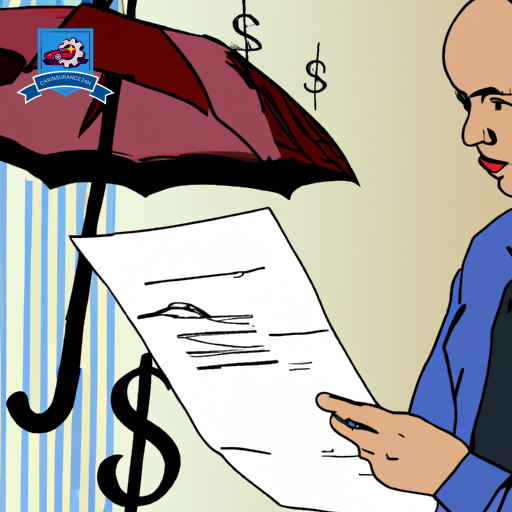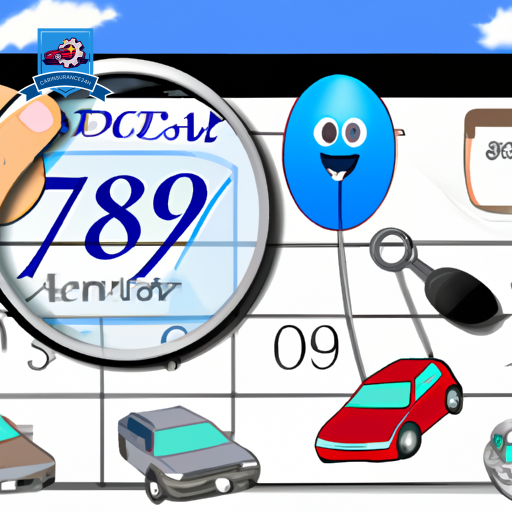As the annual cycle of car insurance renewal approaches, policyholders are faced with the task of thoroughly understanding their renewal notice—a document that, though frequently overlooked, holds critical information regarding policy details, coverage adjustments, and premium changes.
Exploring this document requires a thorough examination of its components to make sure one’s financial protection aligns with current needs and circumstances. Moreover, it presents an opportune moment to explore potential discount opportunities and consider the various renewal options available.
This initial exploration acts as a gateway to informed decision-making, prompting a closer inspection of the nuances that could greatly impact one’s coverage and financial commitments in the year ahead.
Decoding Your Policy Details
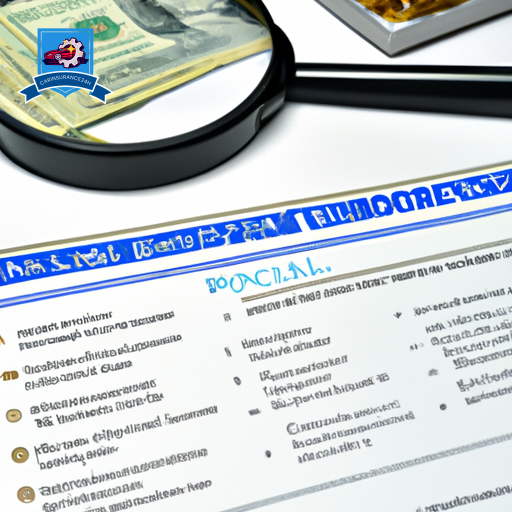
Understanding your car insurance policy details is fundamental to guaranteeing adequate coverage, managing costs effectively, and steering through the renewal process efficiently. This entails a thorough examination of your policy’s fine print, specifically focusing on policy exclusions and the claim process. By doing so, you position yourself to make informed decisions, mitigate unforeseen risks, and leverage your policy’s benefits to their fullest extent.
To start, policy exclusions are critical components that delineate the boundaries of your coverage. These exclusions define scenarios or events where your insurance provider will not offer coverage, effectively highlighting the limitations of your policy. Common exclusions may include damages resulting from wear and tear, driving under the influence of substances, or using the vehicle for unauthorized racing activities. Understanding these exclusions prevents surprises during claim submissions and ensures that you are aware of the coverage scope.
Additionally, the claim process is a fundamental aspect that demands attention. It encompasses the procedural steps you must follow to report and file a claim, the documentation required, and the timelines involved. Familiarity with this process enhances your preparedness to handle accidents or thefts efficiently, ensuring that your claims are processed smoothly and expediently. Furthermore, understanding the claim process enables you to identify any potential hurdles you might face, such as required documentation or specific conditions that must be met, thereby streamlining the resolution of claims.
Assessing Coverage Adjustments
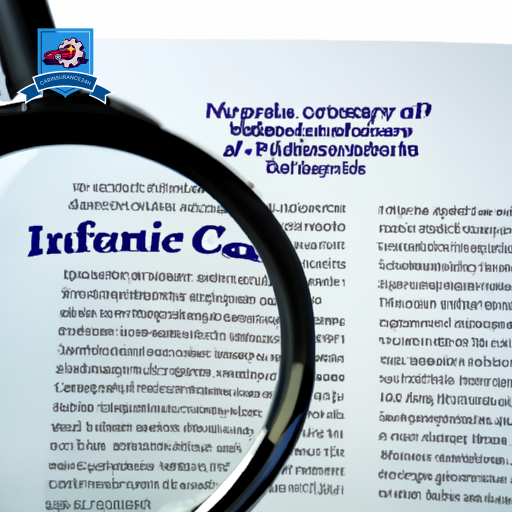
Having explored the intricacies of policy exclusions and the claim process, the next logical step involves evaluating potential adjustments to your coverage to better align with your current needs and circumstances. This assessment serves as a critical juncture in making sure that your car insurance policy remains relevant and thorough, given any changes in your driving habits, vehicle condition, or personal circumstances that may have occurred since your last renewal.
First and foremost, contemplate the coverage exclusions detailed in your policy. These exclusions delineate scenarios under which your insurance provider will not offer coverage. Evaluating these can help identify gaps in your current coverage that may need addressing to make certain you’re adequately protected. For instance, if your policy excludes coverage for damages caused by natural disasters and you’ve recently relocated to a region prone to such events, you might want to think about adjusting your coverage to include this risk.
Next, evaluate the necessity and adequacy of policy riders you currently have or may need to add. Riders, or endorsements, allow for the customization of your insurance policy by adding coverage for specific situations beyond the standard policy. For example, if you’ve started using your vehicle for business purposes, a commercial use rider might be crucial to make sure coverage during these activities.
Analyzing Premium Changes

Once you’ve tailored your coverage to suit your current needs, it’s imperative to then analyze how these adjustments might impact your insurance premiums. Understanding the nuances of premium changes requires a structured approach, focusing on the factors that most importantly influence rate adjustments. This analysis is crucial for ensuring that your insurance renewal aligns with your expectations and budget.
When dissecting the elements contributing to premium changes, consider the following:
- Rate Fluctuations: The insurance market is subject to various external influences, including economic conditions and regulatory changes. These factors can cause general rate fluctuations that impact premiums industry-wide.
- Claim History: Your personal claim history is a critical determinant. An increase in claims can signal to insurers a higher risk level, thereby increasing your premiums.
- Coverage Adjustments: Altering your coverage limits or deductibles can directly affect your premium. Increasing coverage limits or lowering deductibles typically results in higher premiums.
- Vehicle Changes: Adding a new vehicle or changing the type of vehicle insured can influence your premium due to variations in the vehicle’s value, repair costs, and theft risk.
- Location Changes: Moving to a new location can affect your rates due to differences in traffic density, crime rates, and risk of natural disasters.
Analyzing these factors in the context of your insurance renewal notice helps in understanding the rationale behind premium changes. It facilitates a more informed dialogue with your insurance provider, ensuring that your coverage remains aligned with your financial and protection strategies amidst evolving personal circumstances and market conditions.
Exploring Discount Opportunities

After analyzing the factors influencing premium changes, it becomes equally important to explore the various discount opportunities available to potentially lower your car insurance costs. Identifying these opportunities requires a structured approach, focusing on loyalty rewards, payment methods, and other insurer-specific discounts.
To begin with, loyalty rewards present a significant avenue for savings. Insurers often recognize and reward customer loyalty with discounts for those who have maintained policies with them for several years. These rewards not only manifest as direct premium reductions but can also include perks such as accident forgiveness programs or reduced deductibles over time. It’s essential to inquire about these rewards during the renewal process, as they may not always be automatically applied.
Next, payment methods can influence the overall cost of your car insurance. Many insurance companies offer discounts for policyholders who opt for automated payments or pay their premium in full at the beginning of the policy period. These discounts are not only a reflection of the reduced administrative costs for the insurer but also an incentive to encourage timely and hassle-free payment transactions. Evaluating your current payment method and considering a switch could result in noticeable savings on your renewal notice.
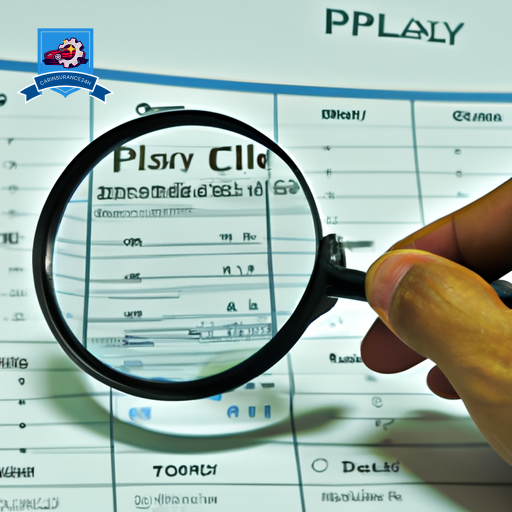
Understanding the landscape of renewal options is a critical step in securing the most advantageous terms for your car insurance policy. As you approach the renewal period, it’s essential to assess your policy’s features against your current needs, financial situation, and any changes in your driving habits or vehicle status. Being proactive and well-informed can lead to substantial savings and enhanced coverage.
Guiding the renewal process requires attention to several key factors:
- Renewal Timeline: Mark your calendar with the renewal date and start reviewing your options well in advance. This makes certain you have ample time to make decisions without pressure, compare quotes, and negotiate better rates.
- Comparison Shopping: Even if satisfied with your current insurer, it pays to explore the market. New customer discounts or changes in your circumstances could make another provider more competitive.
- Policy Adjustments: Review your existing coverage levels and deductibles. Life changes such as buying a new car, moving, or changes in driving patterns may necessitate adjustments to your policy.
- Payment Methods: Insurers often offer a variety of payment plans. Choosing an annual payment could yield savings over monthly installments, despite the higher upfront cost.
- Discount Eligibility: Beyond the initial purchase, make certain you’re taking advantage of all eligible discounts such as multi-policy bundling, safe driver awards, or advancements in car safety features.
Frequently Asked Questions
How Does Adding or Removing a Driver From My Policy Affect My Renewal Notice?
Adding or removing a driver from your policy can substantially impact your renewal notice due to changes in driver experience and eligibility for policy discounts. This adjustment affects the risk assessment, thereby influencing premium calculations.
Can Making a Claim During My Policy Period Impact My Car Insurance Renewal Rates?
Making a claim during your policy period can indeed impact your renewal rates, as insurers consider claim frequency when determining premiums. Frequent claims may lead to higher rates or affect eligibility for certain policy discounts.
How Does Moving to a New Address or Changing Jobs Influence My Car Insurance Renewal?
Moving to a new address or changing jobs can notably impact car insurance renewal rates, as 34% of insurers adjust premiums based on parking situations and vehicle type, reflecting the risk profile associated with the location.
What Should I Do if I Find Discrepancies or Incorrect Information in My Car Insurance Renewal Notice?
Upon discovering discrepancies or incorrect details in the insurance renewal notice, immediately contact your insurer for clarification. Addressing errors promptly can prevent policy cancellation or unnecessary coverage adjustments, ensuring your policy accurately reflects your current situation.
How Do Changes in My Credit Score Affect My Car Insurance Renewal Process and Premiums?
Changes in your credit score can notably impact your car insurance renewal process, potentially leading to premium adjustments. Insurers often consider credit factors as a determinant of risk, influencing the cost of your policy accordingly.







